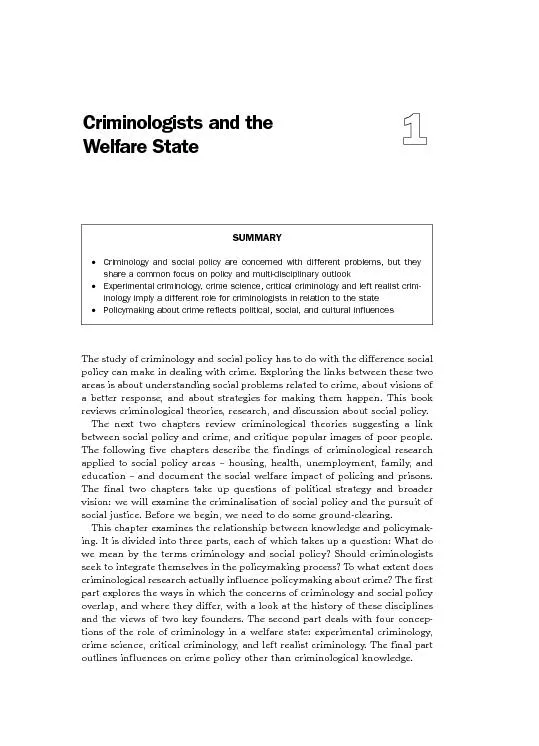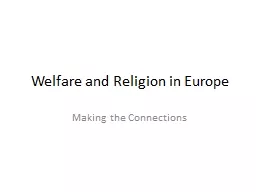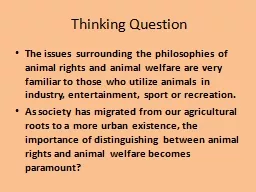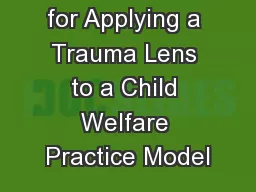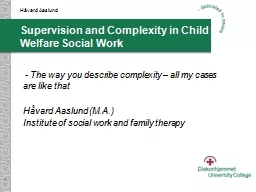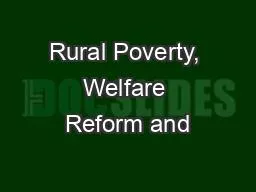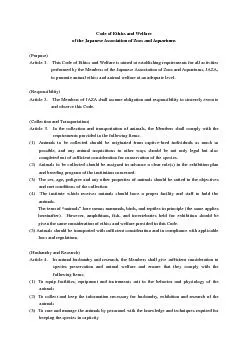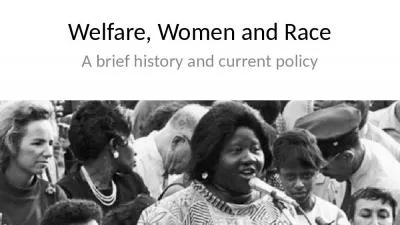PDF-Criminologists and the welfare state
Author : tatyana-admore | Published Date : 2017-03-31
Welfare State Knepper3530CH01qxd 2232007 1138 AM Page 3 Ordinarily criminology and social policy are thought of as separate disciplines But during the past decade
Presentation Embed Code
Download Presentation
Download Presentation The PPT/PDF document "Criminologists and the welfare state" is the property of its rightful owner. Permission is granted to download and print the materials on this website for personal, non-commercial use only, and to display it on your personal computer provided you do not modify the materials and that you retain all copyright notices contained in the materials. By downloading content from our website, you accept the terms of this agreement.
Criminologists and the welfare state: Transcript
Download Rules Of Document
"Criminologists and the welfare state"The content belongs to its owner. You may download and print it for personal use, without modification, and keep all copyright notices. By downloading, you agree to these terms.
Related Documents

